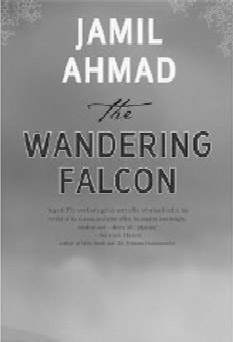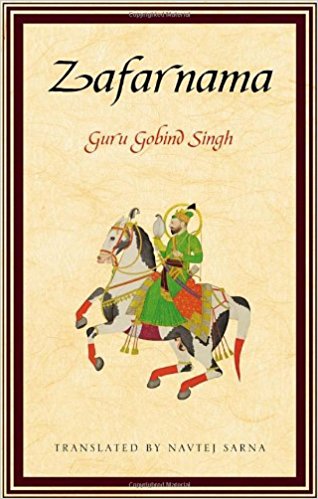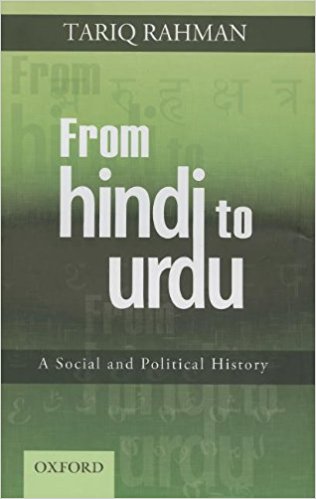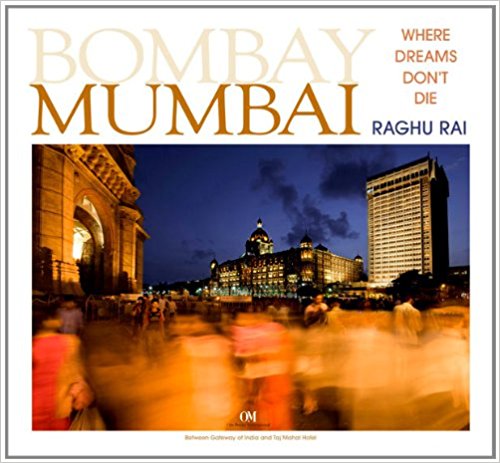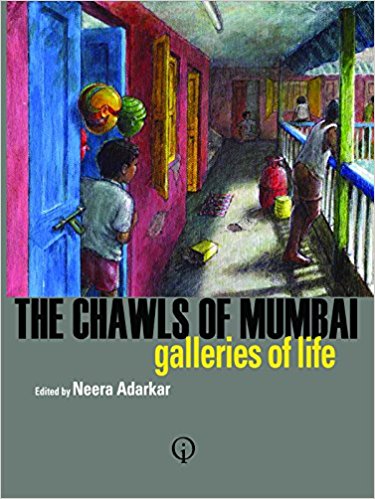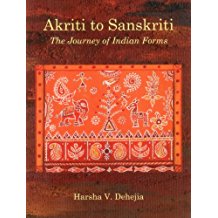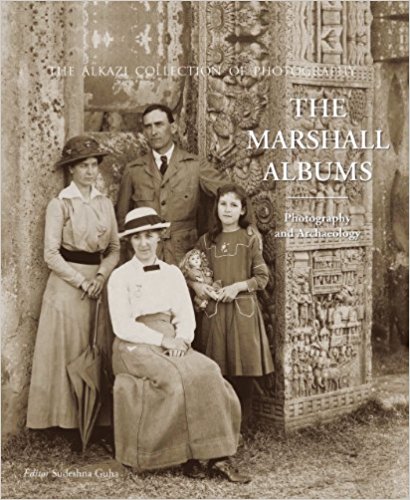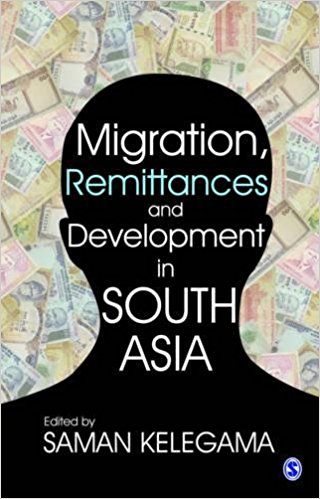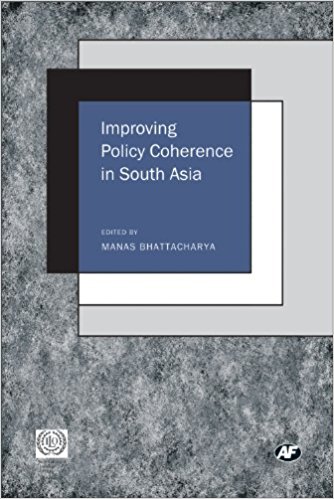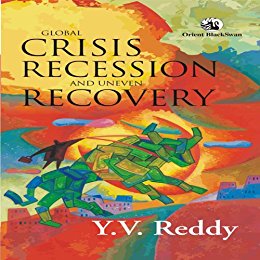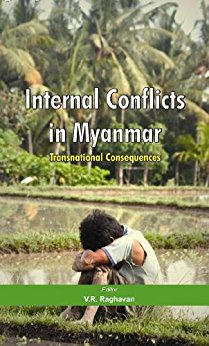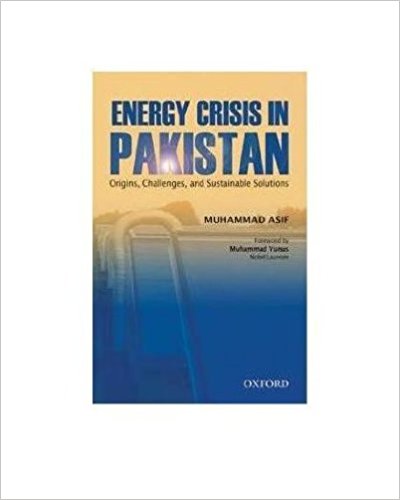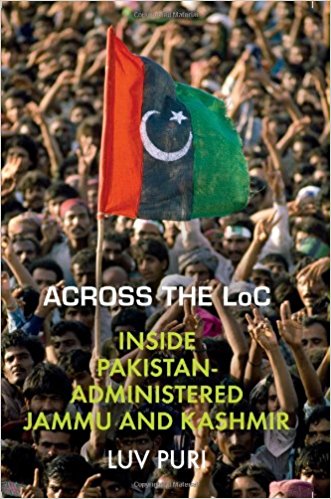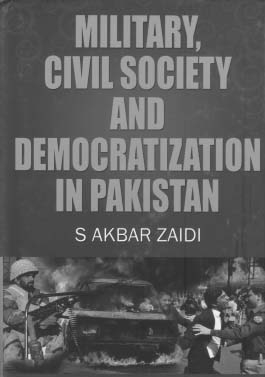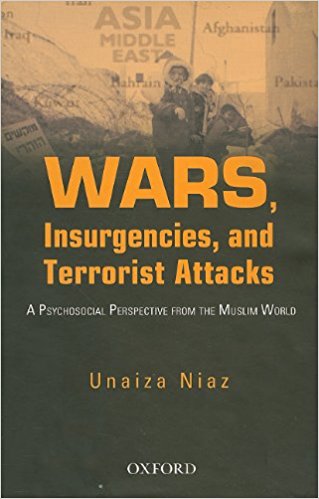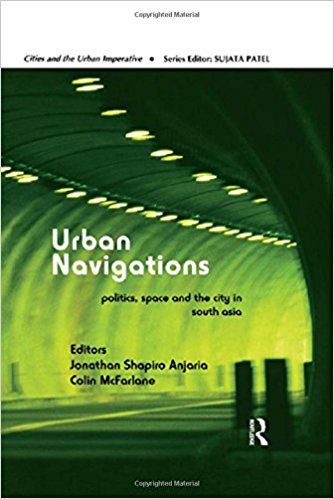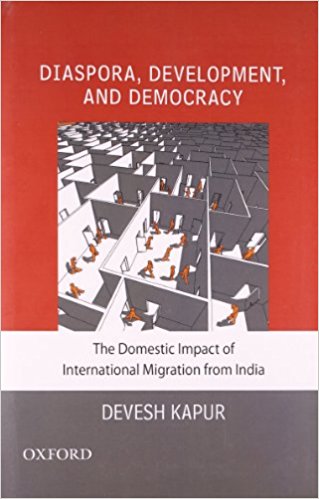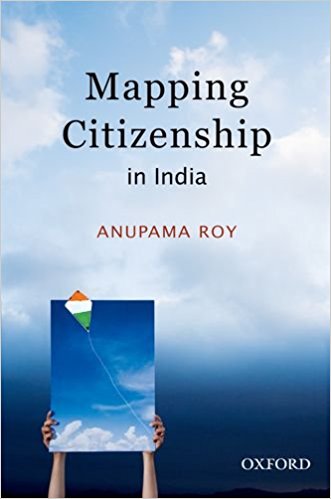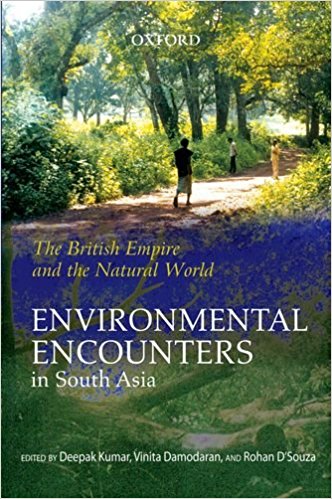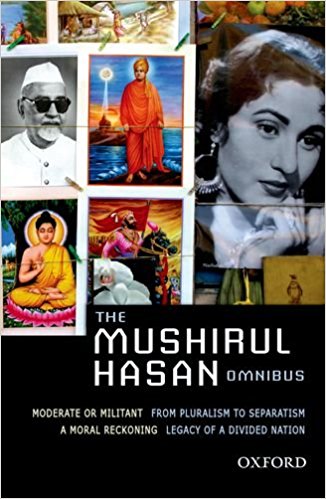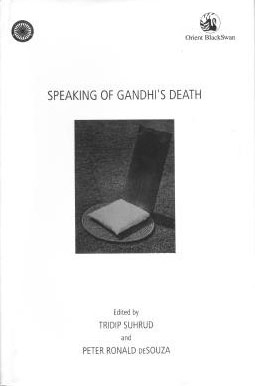Ranajit Guha has over his long career as the ‘founder and guiding spirit of Subaltern Studies’ (p. 1) and also for his own passionately committed writing, earned great significance worldwide among scholars and students of colonial and post-Independence Indian history and of the nature of historiography in general…
Archives
August 2017 . VOLUME 35, NUMBER 8/92011
Any time partition is mentioned, the mind immediately goes to 1947 and all the carnage that is usually associated with the birth of Pakistan. What many forget is that 1947 marked just one of two partitions Pakistan had to suffer.
A part from the title and a semblance of the mood, Aamer Hussein’s The Cloud Messenger shares very little else with Kalidasa’s lyric poem of 111 stanzas, Meghadutam. For instance, Hussein’s narrator-hero, Mehran, is no exiled lover. Hussein’s kunstlerroman borrows the lilting romantic tenor of the poetic conceit used by Kalidasa in his sandesa kavya…
2011
With insurgent and resistant narratives thronging the repertoire of contemporary South Asian fiction, what stands undisputed are the truth-claims of Eric Hobsbawm’s theory regarding the paradox of South Asian nationalisms: new and old. Provocatively flaunting the gauntlet, the historian stakes his claim by stating that (almost) all insurgencies…
2011
A wander through the fiction section of Delhi’s bookstores reveals rows and rows of colourful dust-jackets and attractive offerings by Indian and Pakistani authors. The volume is staggering, but though there is no shortage of choice, not all of it is good. Sadly, Invitation too promises more than it can deliver…
For the past couple of years, we have been told, often and loudly, that Pakistani fiction has come of age. It is unclear exactly what this means, but apparently a dedicated issue of Granta is an essential marker. In some recent essays, the Indian writers Amit Chaudhuri and Palash Mehrotra among others have argued that plaudits…
2011
The bountiful nature of the publishing business in India in recent years has brought tens of new voices writing in Indian English to the bookstores and bedside tables. Not all of this mishmash of themes and writing styles makes for great reading, and almost always the blame lies in for pretentious, uninspiring writing…
2011
A slim 47-page booklet forms the kernel of this book; the rest is mere padding in the form of introduction, appendices and notes. However, the 47 pages of Iqbal contain much that is illuminating and useful—not merely about one of the greatest poets of the Urdu language but also about his age and many of his peers…
2011
There are documents that survive the strife of history. Who would have known that a missive written by Guru Gobind Singh, the tenth Guru of the Sikhs, to Aurangzeb, the last great Mughal emperor, right after his defeat at the hands of the Mughal army, would survive ironically as Zafarnama, an epistle of victory?…
That the US invasion of Iraq informs, indeed haunts, policy-making in the US was illustrated in some speeches and justifications related to the UN-sanctioned but US and NATO-led no-fly-zone over Libya. What seemed to vex policy-makers and military strategists was whether UN Resolution 1973 allowed for ‘regime change’…
To be able to distill your love for words and art into the work that you do for a living, and that work of a nature that fulfills a niche in society, is to be fortunate. Debjani Chatterjee, well known and much awarded poet from Sheffield, England, was once a community relations officer.
Sample this: A headline in a leading Hindi News channel, ‘Tabaahi ki Taaza Tasveerein’ (Hindi?) Another headline in a leading Urdu daily, ‘Cut-Off Ke Doosre Din Honours Courses Ki Demand’ (Urdu?) And yet the Hindi-Urdu divide has played a crucial role in the history of the subcontinent. Any serious attempt to understand identity formation in India…
Raghu Rai is one of India’s most celebrated photographers and his 29th book of photographs on Mumbai is yet another visual treat. Aimed at capturing the essence of Mumbai, it is almost a study of contrasts and very evocatively captures slices of what Mumbai as the city really is.It starts off with an introduction of Vir Sanghvi on the origin and evolution of Mumbai. It is fairly well written, except that it starts off sounding like a history lesson and ends like an anti-Shiv sena rant, but that is besides the point…
The Chawls of Mumbai: Galleries of Life edited by Neera Adarkar gazes at the city of Mumbai through the prism of this specific structure—the chawl. The result is an interesting and rather different view of a city that has gathered global notoriety through some recent popular books about it…
This is an intense book but then rarely does a book that indulges in architectural theory make itself so lucid and strong-footed. Setting the stage for declaring the emergence of Post-Rational Architecture, Jaimini Mehta eloquently traces the vocation’s transition over its recent two hundred and fifty year-old history…
It is common fare for books on cultural anthropology to begin with statndard kowtowing to Clifford Geetz and Edward Said. Past the introductory chapter, most often they succumb to the very pitfalls that Said and Geetz warn them about. Images of Afghanistan is cultural anthropology at its finest as it tries throughout to maintain…
As befits a book that celebrates form in its myriad manifestations, the book is accompanied by beautiful illustrations that buttress the formulations the author sets out to do. In essence, what is stated by the author in the introductory chapter and then subsequently demonstrated through a delineation of specific forms ranging…
As Director General of the Archaeological Survey of India (1902-28) and then Officer on Special Duty (1928-34), John Marshall carved out an extremely important place for himself in the history of Indian archaeology. His tenure is associated with increasingly systematic excavation and conservation activity…
2011
A few months ago, I had as my co-passenger Anu Pillay, a doctor working with Medica Mondiale, in Liberia. Medica Mondiale is a world wide organization founded to assist women traumatized by rape, especially in war situations. A South African of Indian origin, Anu spoke of horrifying degrees of sexual abuse that women…
Alamgir Muhammad Serajuddin’s book provides a comprehensive idea of judicial activism that has taken place in south Asian regions especially India, Pakistan and Bangladesh in recent times. The methodological framework explains the concept of judicial activism and creativity and emphasizes the role of the courts as an agent of social change…
Identities and Histories is an insightful and passionate book about the emergence of women as political subjects. The book moves away from questions of nationalism, modernity and reform which framed earlier bodies of feminist history-writing in India. This earlier body of work had shown us how the nation and indeed the political itself were historically…
In eloquent and insightful expose of economic diplomacy principles and practices, Kishan S. Rana and Bipul Chatterjee succeed in crafting a book that will stimulate and inform anyone interested in this previously opaque realm of international relations. The economic dimension of diplomacy constitutes an increasingly…
Migration, Remittances and Development in South Asia explores the impact of migration on development in South Asian countries and makes recommendations for benefiting more from out-migration and reducing its ill effects. It recommends policies for each of the eight countries and the region as a whole…
The thesis of Thenuwara’s book is ‘good money’ creates wealth and growth while ‘bad money’ would retard this—an observation made by Copernicus in 1529 A.D. The underlying theme of the book is the need for a Central Bank to conduct an independent monetary policy and thereby keep inflation low, which is essential…
Manas Bhattacharya is a Senior Technical Specialist at the ILO. The book under review is the output of the High-Level Tripartite Meeting on the Nexus of Growth, Investment and Decent Work for South Asian Sub-region, organized by the ILO in 2007. The seven papers in the volume have been contributed by economists from across the South Asian Region…
The inception of the WTO in 1995 was expected to ensure reduction of trade barriers, thereby causing freer movement of merchandise products and commercial services across international borders. However since the failure of the Seattle Ministerial Meeting of WTO in 1999, it was quite clear that the days of trade frictions are far from over…
The Great Recession, which began with the financial crisis of 2007-08, though partially addressed, is still with us. Yet the expectation it generated, that given its severity it would trigger the implementation of measures aimed at reining in finance and pre-empting similar crises in the future, remains largely unrealized…
2011
This year marked the 150th birth anniversary of the Nobel Laureate Rabindranath Tagore that also coincided with six decades of establishment of diplomatic relations between the two major and rising Asian neighbours India and China and the 90th anniversary of the founding of the Communist Parties in both these countries…
One of most serious problems that the ruling elites faced in the ex-colonial and newly independent countries is the integration of ethnic, religious, linguistic and diverse groups living within a territorial state structure created by the colonial masters for their own convenience through their policy of divide and rule…
Few will disagree that the energy crisis is the least of Pakistan’s concerns at the moment. However, Pakistan’s energy access to its population has better figures to that of India (Pakistan has a Energy Development Index ranking ahead of India). Yet the problems plaguing the energy situation there is very different from India…
2011
I slam and Society in Pakistan: Anthropological Perspectives is a collection of 15 ethnographic essays, edited by Magnus Marsden, and brought out as part of the series Oxford in Pakistan Readings in Sociology and Social Anthropology. Although the chapters are collated from different journals and edited books and written over a period of 15 years…
Any organized study on the religious and radical groups of Pakistan is perhaps the most relevant; in this, a study of two entities—the Jamaat-e-Islami and Jamaat-ud-dawa is perhaps the most important, for both are extremely organized. Though the critics would argue that despite being the most powerful religious political party…
As images of Benazir Bhutto sinking into her SUV, on that fateful date of December 2007, flashed all over the world, Amir Mir let a silent prayer in his mind. He found out in a matter of few hours, along with millions across his country, that even the most heartfelt prayer could not save Bhutto from her demise…
In the early 1970s,’ wrote the political activist—and, in his youth, would-be insurgent—Nasir Gilani, ‘the crossing of (the) LoC was as mystical for a Kashmiri youth as the Eve St. Agnes to a virgin.’ His contemporaries, Gilani noted, ‘seemed mesmerized by a belief that a solution to all their ills on the Indian side of Kashmir lay on the Pakistani side of Kashmir.’..
At Independence in 1947, Pakistan was a nation, full of hope, aiming to become a progressive homeland for South Asia’s Muslims. That dream remains unfulfilled. Despite roughly comparable socio-economic and political conditions as in India, democracy has consistently failed to take root in Pakistan and the country remains…
The nature of the US-Pakistan relationship has been very difficult for many analysts to fathom. Is it a relationship based on some broad principles and common objectives or is it an opportunistic alliance—from which neither is able to disengage? That there is little trust between the two countries has been obvious over the years…
Ten years after the invasion of Afghanistan, the countdown for the American withdrawal has formally begun. The United States President, Barack Obama, has announced that 10,000 American troops will leave Afghanistan by the end of this year and another 23,000 by the summer of 2012. Over the next two years,…
Akbar Zaidi’s book on the relationship between the military, civil society and political parties in Pakistan is primarily a compilation of what he has written in the past on the impact of militarization on his country’s national life.
Are the Pakistani people faced with a devil-and-the-deep-sea choice: condemned to live forever in backwardness and anti-democratic mould, of remaining permanently in a feudal set-up or going the Taliban way?
Maleeha Lodhi’s edited volume is one of the few books that Pakistan military’s Inter-Services Public Relations’ head Maj. General Athar Abbas recommends to his visitors. The value of this book for Pakistan’s armed forces and establishment is that it presents Pakistan as ‘beyond a crisis state’. The basic thesis of the volume…
The elephant has become an obvious, even if cliched, symbol of modern India but the imagery of the dancing elephant has been used in other contexts as well. Thus Louis V. Gerstner in his Who Says Elephants Can’t Dance? recounts the dramatic turnround in the fortunes of IBM that was once considered too big and not nimble enough to survive…
Terrorism as a subject has evoked a great deal of academic interest from various disciplines. Professor Unaiza, a consultant psychiatrist and psychotherapist, has put together this work ‘to sensitize and create awareness about the relentless sufferings of innocent civilians globally following 9/11.’…
Despite being consciously underestimated’ and described in anodyne terms as ‘unconventional’ or ‘irregular’ conflict’ the fact is that ‘insurgency’ has been the most common form of warfare in history. Conventional or regular conflict’ in brief’ ‘wars’ as commonly understood’ is the exception’ rather than the rule’ if past conflicts were to be reviewed…
The study of urban sociology has fast gained ground in India in the preceding decade. This is concomitant with the rapid pace of urbanization taking place across the country. The city has always been the focal point of aspirations. Almost as soon as India realized its aspiration of integrating with the world in a fuller manner, its populations,…
It is commonly argued today that the greatest threats to world order and security come not from strong and well-organized sovereign states, but the world’s most fragile states, alternatively called ‘failing’, ‘quasi’, ‘faltering’ or ‘weak’ states. While the first murmurs about these so-designated ‘failed states’ began to be heard around the time of the Clinton adminis-tration…
With increasing globalization, economic integration is an important part of development efforts in any region. Despite a lack of cohesive economic unit in South Asia, there has been growing interest in South Asia as a destination for trade and investment. Also politically South Asian countries are in a state of flux given…
The book under review is a refreshing volume rich with brilliant theoretical insights, first-rate empirical analysis and bold academic arguments which would not only be useful for students of South Asian international politics but also policy makers of the region. However, the book also suffers from a number of shortcomings…
International Relations (IR) theory has been a relative latecomer to South Asia. Until a few years ago, much of the IR literature in South Asia—and indeed on South Asia—had been unabashedly untheoretical. But the last decade has seen a flowering of very deliberately theoretical work in South Asian IR…
Good books often get their timing wrong. In the current context in India, where morality and ethics are both at a discount, this book is both timely and excellent. It comprises a collection of papers, of somewhat uneven quality, presented at a workshop in 2007 in Vancouver on South Asian ethical practices.
India has completed nearly two ‘successful’ decades of economic liberalization aimed at unrestricted movement of goods, services and investments across economies.
International migration is not a new phenomenon for the globetrotting Indians who today constitute more than twenty-five millions living either permanently or temporarily in different countries around the world.
In the classical Marshallian framework, citizenship was visualized in terms of a contradictory relation to capitalism. The three components of citizenship, under the scheme Marshall espoused, referring to civil, political and social, were coterminous with the expansion of the right to free speech, right to participation and economic welfare.
More so than most other Indian states, Gujarat appears enigmatic to many observers. Its most famous son is Mohandas Gandhi, but he is also a uniquely despised figure in much of middle class Gujarati society at home and abroad.
Absolute unity will also mean a self-cancellation of love for it needs an other for it to live (p. 248)
Developing an idea of self-division for self-expansion in the writings of Rabindranath Tagore, Pradip Kumar Datta sums up in this tantalizing and aphoristic formulation, the central problematic of identity.
If it takes breadth of imagination and a grasp of geography to grapple with the enormity of the scale and consequences of the British Empire, the authors of The British Empire and the Natural World do it for their readers in one extended 91-word sentence. I reproduce here part of it: ‘If totalled as a single bloc from territories…
Anis Kidwai belonged to the illustrious Kidwai family of Barabanki family that has made more than a signal contribution to the making of India, not only in politics and governance but in diverse fields of creative endeavour.
It is always interesting to read a real story, the real story—and this is one that is about the Mutiny/ the First War of Independence/ the Great Uprising of 1857. But what earns the right to be called the real story, the truth? The answer now is that the truth is what is perceived by ordinary people, what they experience and record for us.
Mushirul Hasan is one of the most prolific historians specializing in the study of ‘modern Indian history’. His corpus of work is vast and consists of several monographs.
The study of an ideologized and activist organiation like the Majlis-i-Ahrar-i-Islam(MAI) is actually a journey through several inter-related domains including political Islam, South Asian Muslim identity politics,
Nancy Gardner Cassels’s book as the title suggests is a scholarly account of a range of East India Company legislation across various fields, from Sati to Emigrant labour, and from Meriah Sacrifice to the Pilgrim tax.
This volume of Nehru’s selected works, edited by Aditya and Mridula Mukherjee covers the period of three months from April to June 1958. Like earlier volumes, it gives us a flavour of the times. It offers an overview of the major problems confronted by India in the 1950s, and how Nehru coped with them…
In March of 1948—the austere white dust jacket would have us know – a group of Gandhi’s closest associates met at Sabarmati Ashram to reflect on his assassination. The group included Jawaharlal Nehru, Maulana Azad, J.B. Kripalani, and Jayaprakash Narayan, among others. ‘Sixty years later,’ continues the blurb, on 30 January 2008…






